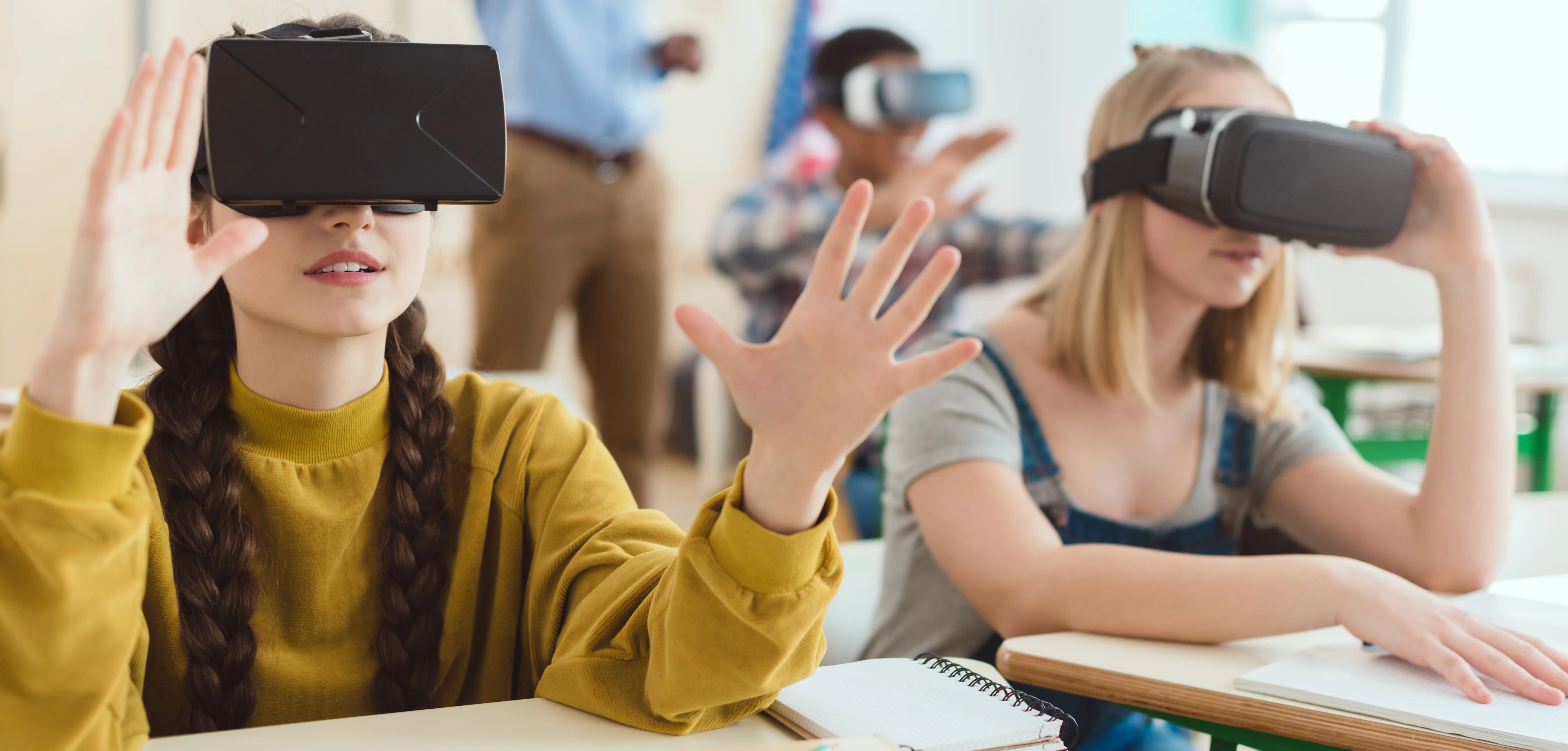
Education is power and with the help of today’s modern and advanced virtual reality technology, we have all the power at our fingertips.
Virtual learning with modern technology is a new approach that has been used by a lot of higher educational institutions and universities in the last few years to educate students effectively. Because of VR education, students all around the globe are no longer relying on the age-old, uni-dimensional, chalk-and-board methods of learning.
This post provides clear insights into the benefits of virtual learning and how it affects students’ performance. So, let’s begin.
Collaboration and Facilitated Learning
While traditional education promises a physical classroom filled with students, the dynamics within often struggle to foster effective collaboration and idea-sharing. Limited time and structured class formats can hinder meaningful discussions, leaving students with a lack of dialogue to explore concepts deeply.
Isn’t it?
VR for higher education addresses this challenge and creates a space for real-time collaboration.
Through virtual learning platforms, students can engage in discussions, share ideas, and spark new concepts. This not only facilitates learning but also nurtures a deeper understanding of complex topics. Learning in a virtual reality environment enables students to connect, mentor one another, and collectively explore subjects, overcoming the limitations often imposed by traditional classrooms.
Tailoring Education to Individual Needs
No two individuals are similar, then how can we expect them to learn at the same pace?
Well, learning is an individual journey but traditional approaches to education fail to cater to the needs of each student separately. However, virtual learning recognises and embraces this diversity. With the introduction of the virtual learning environment, the students have the freedom to freely identify and pursue their preferred learning styles.
Thus, it ensures that education is crafted in such a way that it meets the unique needs of individual students.
Empowering Students with Choices
In the modern educational world, the Internet is an expansive repository of information offering students with endless possibilities to collaborate and explore resources.
Higher educational institutions are recognizing and harnessing its potential, moving ahead in this technical age of education.
By providing students with choices, institutions empower the students to customize their educational journey, aligning courses with their unique needs and preferences. This not only fosters a sense of autonomy but also ensures a cost-effective approach to education. This ability to tailor learning experiences allows students to maximize their potential in a way that resonates with their learning styles.
Shifting the Focus from Teacher to Student
In the traditional classroom, the focus is on the teachers. This means that students have to depend on the teachers/instructors to gain knowledge.
However, within the world of virtual learning, there is a greater emphasis on the students instead of the instructor. VR learning allows students to conduct independent research, fostering self-reliance and critical thinking. Taking responsibility for their learning makes students to develop the skills necessary for success in the workplace.
What is more interesting to note is that with virtual education, students develop technical skills as well. Students learn to navigate various software and quickly adapt to new technologies. This not only enhances efficiency and productivity but also prepares them to implement these skills in a professional setting. The ability to navigate through programs and consume information independently is a valuable asset in the rapidly evolving digital landscape.
Moreover, in virtual learning, the onus of learning is on the student. They learn to seek out help and resources when faced with difficulties, thereby enhancing their knowledge base. This shift in responsibility from teacher to student not only broadens their comprehension of subjects but also instils a sense of accountability for their education.
Overcoming Challenges in Virtual Learning
The higher educational system is taking a new form because of the virtual learning offered by advanced technology. But, it also has its share of challenges.
One of the most important hurdles is the technological disparities. It is necessary to understand that not all students have equal access to technical devices or reliable internet connections. This means that students who want to learn through immersive engineering can face difficulties in having equal educational opportunities because of the digital divide.
Furthermore, the traditional educational approach includes face-to-face interactions which is missing in virtual reality education. The absence of face-to-face interactions poses a challenge in fostering a sense of community and social connection among students. The virtual environment, although rich in information, may lack the personal touch crucial for effective learning.
Striking a balance between screen time and other aspects of a holistic education becomes crucial to prevent digital fatigue and burnout.
Furthermore, the self-directed nature of virtual learning demands a higher level of motivation and discipline from students, making it essential to address strategies for maintaining engagement and preventing feelings of isolation.

